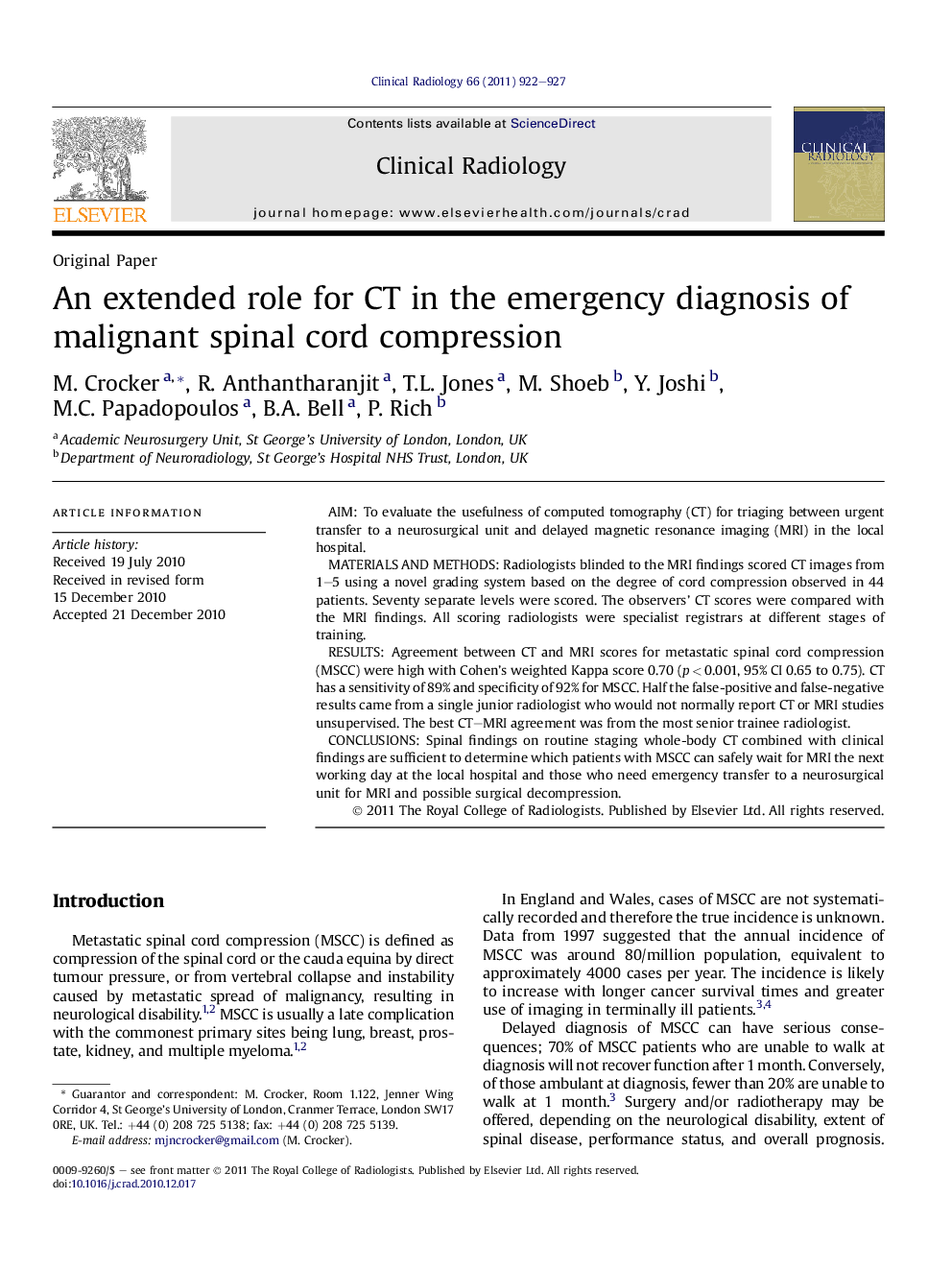| Article ID | Journal | Published Year | Pages | File Type |
|---|---|---|---|---|
| 3982945 | Clinical Radiology | 2011 | 6 Pages |
AimTo evaluate the usefulness of computed tomography (CT) for triaging between urgent transfer to a neurosurgical unit and delayed magnetic resonance imaging (MRI) in the local hospital.Materials and methodsRadiologists blinded to the MRI findings scored CT images from 1–5 using a novel grading system based on the degree of cord compression observed in 44 patients. Seventy separate levels were scored. The observers’ CT scores were compared with the MRI findings. All scoring radiologists were specialist registrars at different stages of training.ResultsAgreement between CT and MRI scores for metastatic spinal cord compression (MSCC) were high with Cohen’s weighted Kappa score 0.70 (p < 0.001, 95% CI 0.65 to 0.75). CT has a sensitivity of 89% and specificity of 92% for MSCC. Half the false-positive and false-negative results came from a single junior radiologist who would not normally report CT or MRI studies unsupervised. The best CT–MRI agreement was from the most senior trainee radiologist.ConclusionsSpinal findings on routine staging whole-body CT combined with clinical findings are sufficient to determine which patients with MSCC can safely wait for MRI the next working day at the local hospital and those who need emergency transfer to a neurosurgical unit for MRI and possible surgical decompression.
